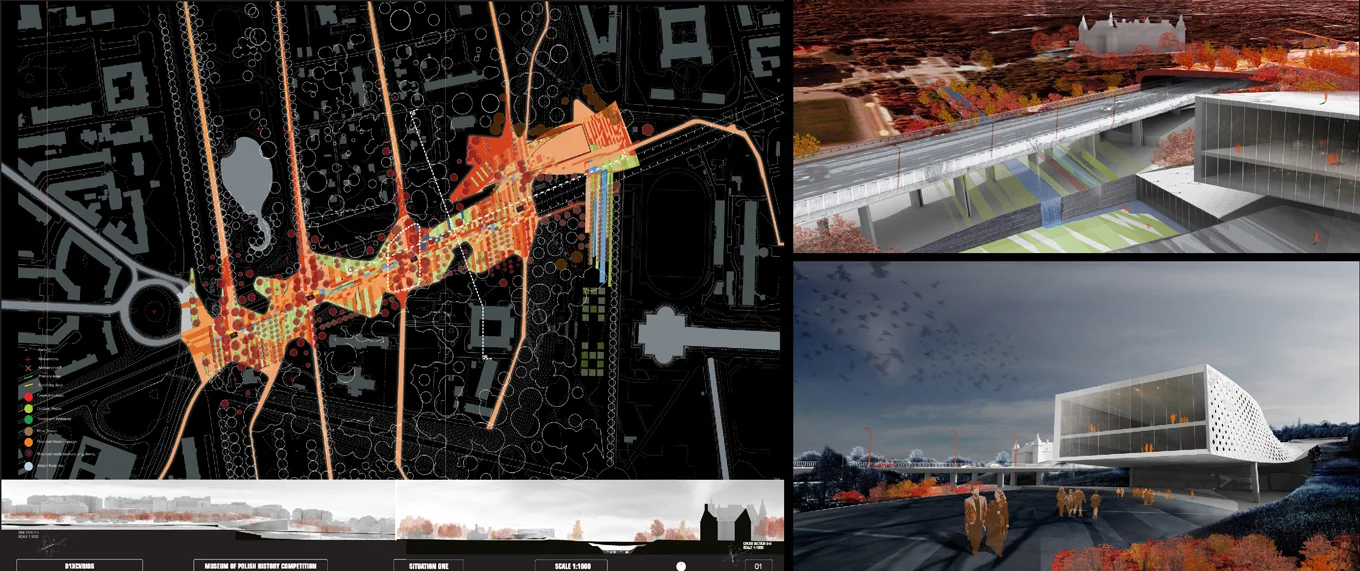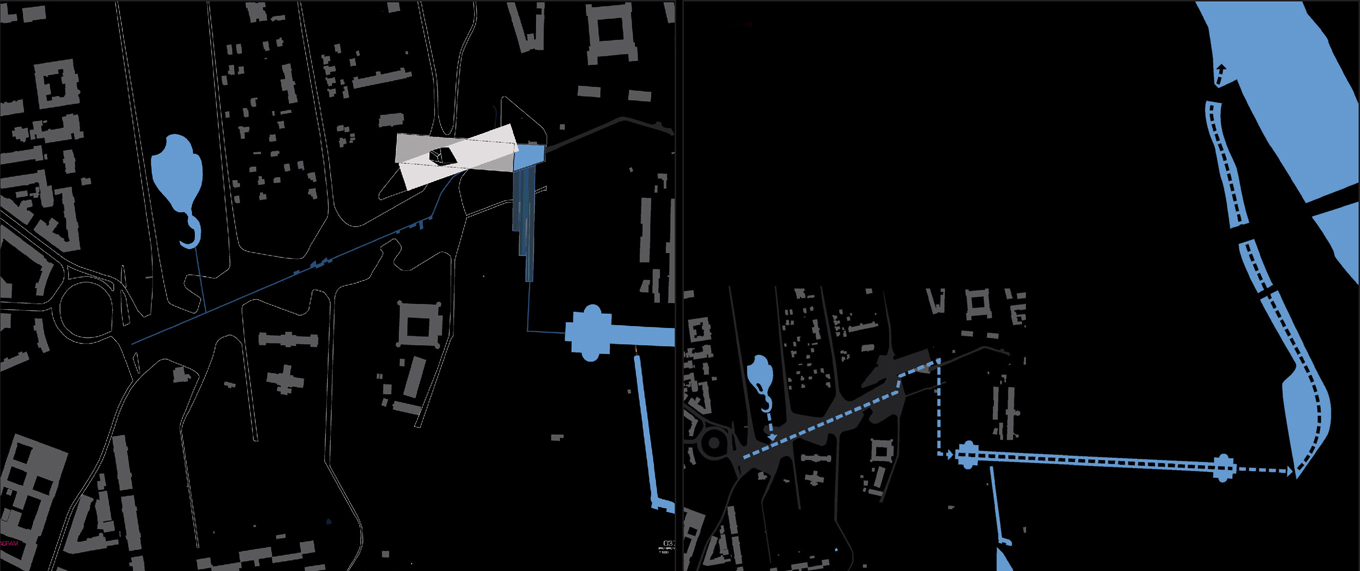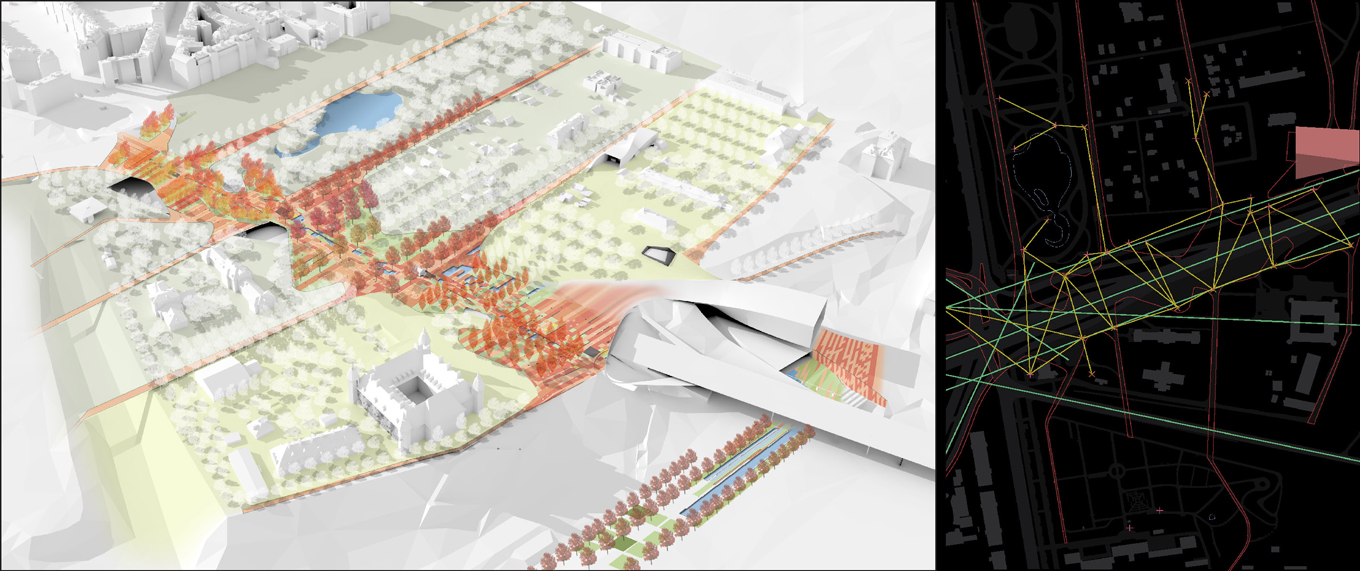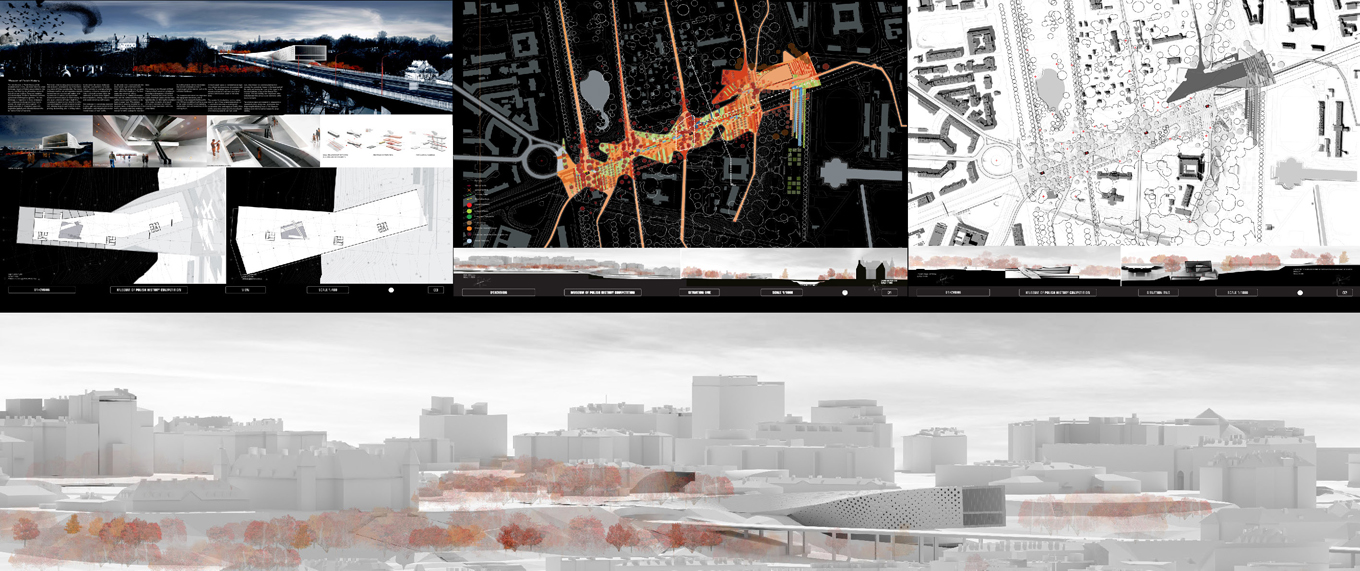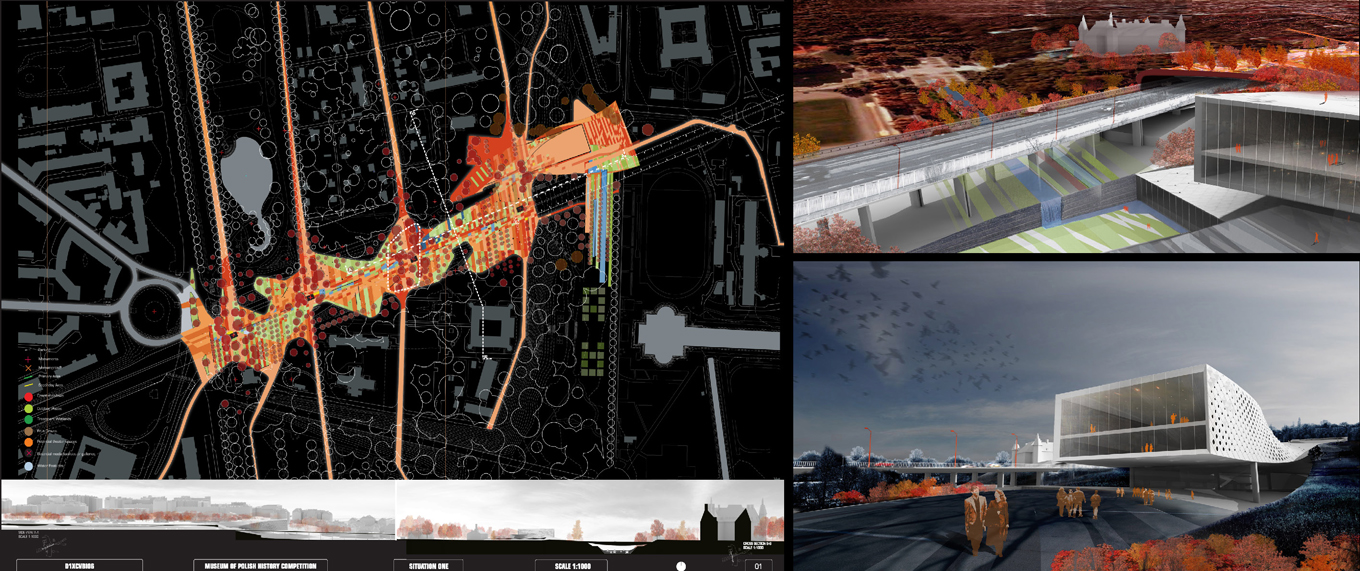The Museum Of Polish History
The new Museum of Polish History will be situated within a richly saturated historical urban landscape. Layers of history accumulated to this day are inscribed into the immediate surroundings of the new building. These surroundings include the Botanical Gardens, agricultural and the palace gardens. The new landscape is responsive to these landscapes, and creates continuity across it’s surface to weaved the larger park together. Our project proposes an integrative weave and negotiates spatially and culturally between the territories historic fragments. The larger urban strategy proposes to articulate an elastic landscape on top of the motorway trench of Trasa Lazienkowska. The elastic landscape reaches out and negotiates spatially between various historical and modern axial systems and is seen as a programmatic extension of the Museum of Polish History. It is comprised of elements that allow for a reflective contemplation, interpretation, participatory documentation, and the active re-writing of history. The elastic landscape becomes, with elements like a oral history collector or a scriptive history repository, a dynamic receptacle of history physically present within the landscape, at same time a digitally active repository, utilizing locative media and social-networking technologies. The landscape is sporadically recessed to allow light and visual contact for the traffic below. At the same time, it acknowledges the most recent layer of infrastructural Polish history, by giving it its own presence rather then negating it. The landscape also serves as a living-infrastructure, to channel stormwater from both it’s surface and the motorway surface to a treatment wetland at the lower museum level. This wetland becomes an aerating waterfall for the museum below, cloaking the noise of the traffic, cleansing water and creating a new performative ecology for migratory birds.

